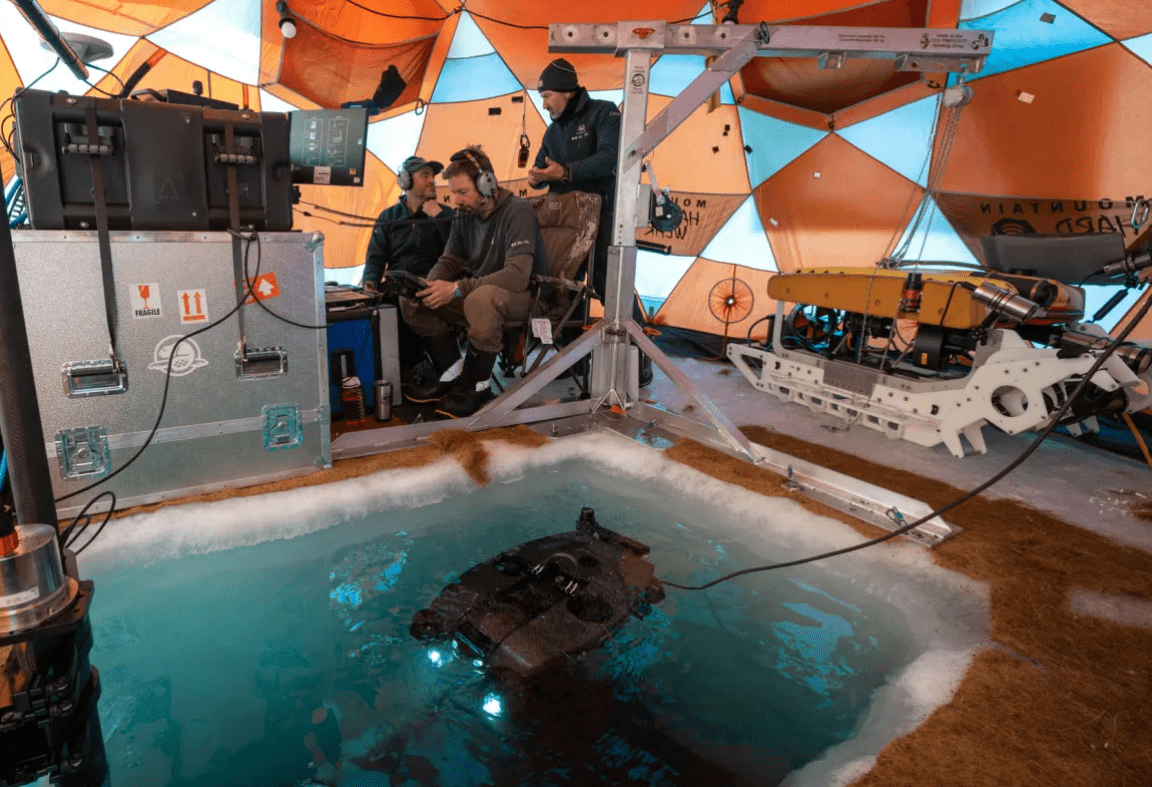Marine archeologists have taken the plunge into the icy waters of the Canadian Arctic Archipelago to explore one of the most famous ships of the 19th century, HMS Erebus.
The ship was part of the daring – and doomed – 1845 Franklin Expedition that sought to traverse the last unnavigated sections of the Northwest Passage in the Canadian Arctic. Together with another ship, HMS Terror, HMS Erebus eventually became trapped in ice near King William Island in the territory of Nunavut, ultimately resulting in the deaths of all 129 crew members.
The Erebus lay undiscovered until 2014 when investigators discovered the wooden shipwreck in remarkably good condition. This year, Parks Canada has been working with the Nattilik Heritage Society’s Inuit Guardians from Gjoa Haven to carry out further work on the site with the hope of gathering fresh insights into the story of the 1845 Franklin Expedition.
“Located in one of the planet’s most unique and sensitive marine environments, the wrecks of HMS Erebus and HMS Terror are some of the best-preserved wooden wrecks in the world. The important archaeological research onsite continues to advance our understanding of how changing climate conditions are impacting the region and helps us preserve and protect irreplaceable natural and cultural heritage,” Steven Guilbeault, Minister of Environment and Climate Change and Minister responsible for Parks Canada, said in a statement.

Deep Trekker ROV in the diving hole at the HMS Erebus site, April 2022. Image credit: Aimie Néron, Parks Canada
Their work started in April and May 2022 when the team inspected the wreck for the first time in over 2.5 years using a remotely operated vehicle (ROV), which managed to gather new imagery and survey data on the site. In September 2022, the team then completed 56 individual dives over the course of 11 days, recovering up to 275 artifacts from the shipwreck.
During their work, the team started excavation of what could be the Second Lieutenant’s cabin, continued the excavation of what is believed to be the Third Lieutenant’s cabin, and completed the excavation of part of the Captain’s Steward’s pantry.
As legendary as the story of the 1845 Franklin Expedition has become, there is still much we don’t know about the final months of the ill-fated mission. However, some of this recent work may be able to shed some light on it.
Ryan Harris, one of the archaeologist divers from Parks Canada, told CBC News that one of the most exciting findings was an embossed leather book that still had a feather quill pen tucked inside of its pages. It is not yet clear what’s been scrawled inside the book, but the researchers are keen to get it back to the lab to find out.
“We’re quite excited at the tantalizing possibility that this artifact might have written materials inside,” Harris said. “It’s being analyzed in the lab now.”
Source Link: Hundreds Of Artifacts Found In Wreck Of The Doomed Franklin Expedition